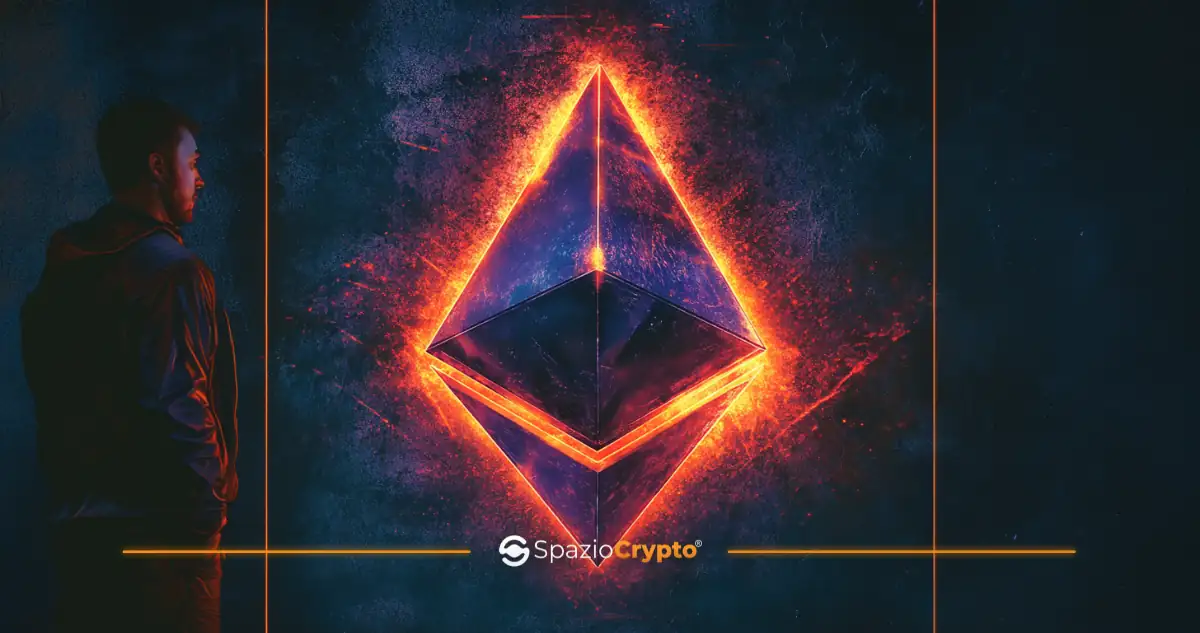
Deflationary Ethereum: Justin Drake's Predictions
Justin Drake sees an increasingly deflationary Ethereum. What strategies can bring back scarcity? And does Bitcoin risk security in the long term?


Get the latest news, learn from experts, discover new tools, and find inspiration right in your inbox.
No spam. Unsubscribe anytime.
A powerful documentary on how Bitcoin and blockchain are reshaping money, power, and geopolitics—from El Salvador’s Bitcoin experiment and Europe’s regulatory revolution to the rise of decentralized finance and the new global financial order.
Justin Drake has identified strategies to bring deflation back to the Ethereum network. Bitcoin, on the other hand, will face security issues as it approaches the 21 million BTC cap.
The development of the energy sector, mining efficiency and economic incentives could mitigate these challenges for the first cryptocurrency. With the reduction in issuance, Ethereum will acquire the status of 'ultra-reliable money', while Bitcoin will 'run its course' once the supply limit of 21 million BTC is reached. This was said by developer Justin Drake.
X
To bring Ethereum back to a deflationary state, the expert suggested reducing issuance and increasing the burning rate of fees. According to him, both scenarios are plausible.
After The Merge update in September 2022, the coin's supply began to decline. However, this trend was interrupted by Dencun: one month after the hard fork, inflation turned positive again.
At the beginning of February, the volume of available coins returned to the levels of two and a half years ago.
Comparing the issues of Ethereum and Bitcoin, Drake found that, after Dencun, 657,000 BTC were generated on the Bitcoin network, while 469,000 ETH appeared on the Ethereum blockchain. In value, these numbers correspond to $63.4 billion and $1.23 billion, respectively.
According to the developer, the 21 million BTC cap could increase security risks in the long run, as about 99% of the miners' income comes from the reward for discovering new blocks.
Ethereum expert Anthony Sassano agreed with Drake.
X
Problems of Ethereum
Drake acknowledged the problem of incentives in staking, leading to the loss of ETH as "pure collateral". He also highlighted the systemic risks arising from the dominance of LST platforms, such as Lido.
The expert proposed a 'croissant' issuance model, whereby coin issuance slows down to zero as the share of ETH in staking approaches 50%. At the tipping point, the annual issuance rate should not exceed 1 per cent to maintain market equilibrium.
Bitcoin maximalists' reaction
In an interview with Cointelegraph, analyst James Check said that critics of Bitcoin's sustainability do not consider key factors such as energy development, mining efficiency and economic incentives.
According to him, if Bitcoin were to become a global reserve asset, high fees would inevitably emerge, similar to those paid by institutions for the custody of gold.
Check also pointed out that the cost of ASIC devices, which are critical to the profitability of mining, is not taken into account. Bankrupt miners sell their equipment at lower prices, allowing new participants to enter the industry and secure the network.
The expert also highlighted the role of the development of the energy sector, particularly nuclear power, in reducing mining costs.
Mining helps stabilise electricity grids by responding to demand and reducing operating costs for operators. According to Check, in the future this activity will increasingly be recognised as a cost-effective way to utilise surplus resources.
Long before, analysts at JPMorgan had spoken about the increasing competitive pressure on Ethereum.
In late 2024, Drake expressed doubts about the direct threat of Solana to the network of the second largest cryptocurrency by capitalisation.
Read Next
BitMine Accumulates Ethereum: Record 200 Million Purchases
BitMine increases Ethereum reserves with purchases of more than $200 million, surpassing major global holders.
December Crypto: 2019-2024 Analysis Between Rallies and Crashes
An analysis of the returns of Bitcoin, Ethereum, BNB, Litecoin and Monero shows that the 'Santa Rally' is not guaranteed: rises only occur in positive macro phases.
FG Nexus sells ETH for $32.7M amid NAV crisis
In a sign of systemic stress, digital asset treasury (DAT) companies such as FG Nexus and ETHZilla liquidate millions of Ethereum to buy back shares at a steep discount to NAV.
US Bitcoin ETFs on a run: markets panic
Persistent outflows from Bitcoin ETFs and the extreme fear index (11) contrast with aggressive whale accumulation. Retail is absent while large investors are buying.